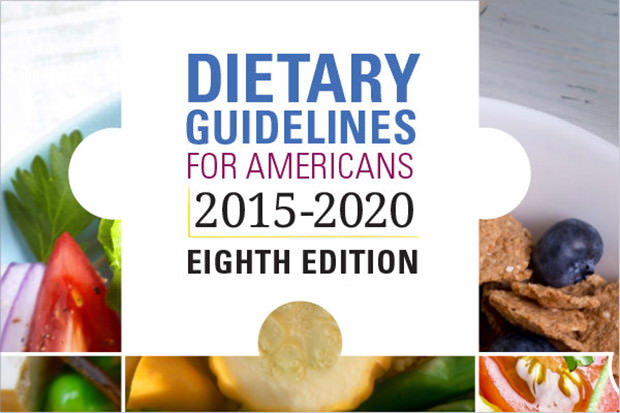This Is What The Government Wants You To Eat

Every five years, the U.S. Departments of Health and Human Services (HHS) and of Agriculture (USDA) come out with a report which contains dietary and nutritional information, as well as guidelines for the general public. The latest one is just in and it is aimed at helping people maintain good health and reduce the risks of developing various chronic diseases throughout their lives. So, what should you eat according to the 2015-2020 Dietary Guidelines for Americans?
One of the first things that the guidelines recommend is to follow a healthy eating pattern across your entire lifespan. In short, they are telling the public that they cannot really expect to be healthy by eating like slobs for two years and then go all healthy and insane for 6 months. If one wants to eat healthy, they need to do it throughout their life.
Another very important thing they point out and something that was probably inspired by all the ridiculous, limited diets is that a healthy diet will involve variety, nutrient density and not simply limitations to the amount of foods people eat. In short, they do not want people following fad diets which drastically limit intake of certain nutrients that are essential for the proper functioning of the human body.
Probably the main bullet point of this year’s guidelines is the recommendation for lower intake of added sugars, sodium and saturated facts. They are clearly and openly stating that the general public should steer clear of products that contain high levels of these substances. They also recommend shifting to healthier food and beverage choices across the board.
One very interesting point that they also raise in the guidelines is the “call to action” to the general public, saying how we all have roles in creating and supporting healthy patterns, not only in our homes but at schools, workplaces and communities.
Now that we have covered the main guidelines, you are probably interested in what exactly constitutes the recommended diet according to the report. Well, it should include a variety of vegetables (dark green, legumes, red and orange, starchy, etc.), whole fruits, grains (at least half of which should be whole grains), low-fat or fat-free dairy, variety of protein foods such as lean meats, seafood, poultry, legumes, eggs, nuts, soy products and seeds and, finally, oils.









